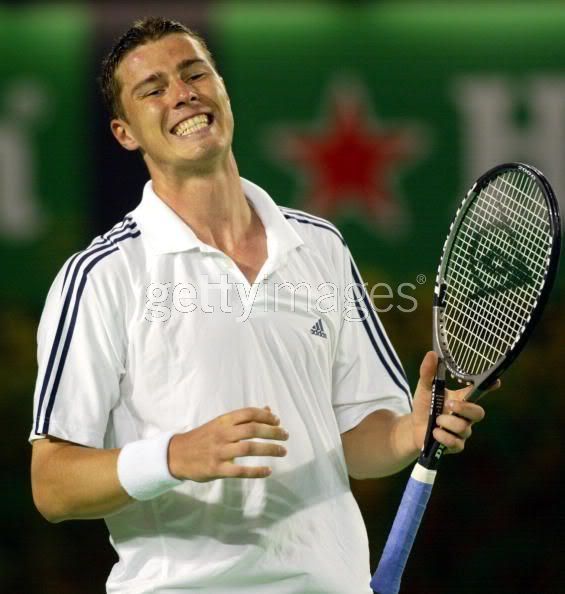What is the
result of the Safin case then? That's why I asked and you still haven't said what it was. WHY they did it is obvious - what was the outcome over the attempts at legal remedy in the link you posted?
When you says they "sued to prevent Dunlop from marketing Safin" do you mean they sued because there was some breach of an existing contract they had with Safin? Or because of the racquet deception which they think harmed their company? I assume it is the latter - in which case it is a commercial law issue.
The basics
- A legitimately signed sponsorship deal is no business of
anyone other than the parties involved. That's a given.
- Head say Safin is using their frame painted as a Dunlop. Still no issue here inherently (use-wise) since he could buy the Head frames in a shop and do whatever the **** he liked with them. As can anyone.
- The marketing however is where it gets blurry. The print/TV marketing no doubt shows Safin using an
actual Dunlop frame right? (surely they're not stupid enough to have him using a PJed Head in their marketing)
- So the remaining issue is that Safin
actually uses a Head frame and which Head says Dunlop is being deceptive about and receiving commercial gain for it.
= Commercial issue.
Head's
practical option for remedy (since no actual loss can be shown) is: embarrassing Dunlop by bringing the issue into the news - basically saying that Head frames are
that good that even Dunlop's sponsored players prefer to use them.
This is
exactly what Head did. That is the biggest king-hit win a racquet brand could ever hope for. It not only makes a mockery of the competition but is also newsworthy, earning them free coverage they don't have to pay for. The best grass-roots marketing imaginable. And that's what they always intended it to be.
Dunlop tries to counter by saying:
we're not pretending anything - he uses Dunlop strings (even if he actually wasn't). Whether or not consumers are convinced or even care is open to debate. Still, no loss is established yet here by Head.
This is being conveniently economical with the reality of the situation. According to everything I saw (or could find now) it was about Dunlop being sick of Safin's antics and breaches of their contract including a couple of instances of his covering up their logo. I can't find nor recall any relationship here with Head's complaints about Safin using their frames.
One ref
It seems like Safin signed with Dunlop and they couldn't make a frame he liked so he kept using PJed Heads. After a few more iterations of Dunlop attempting to make a frame he could/would use use they eventually got sick of him and his antics and decided to part ways.
-------
Now, setting this all aside... I can see where you're coming from but what seems or is actually unethical or deceptive doesn't necessarily make for a legal case - in fact that's usually why well-intentioned but poorly considered cases fail. So, let's just assume for a second the details of the current topic, someone took enough issue with what they saw as deceptive marketing it, took it to court
and were also successful. What would be the likely resulting remedy?
Simple: the racquet manufacturers would be told to say sorry and change their advertising. That would be the end of it. There really is no grounds for damages or to force the manufacturer to make a custom pro frame available to all, notwithstanding courts don't bother demanding impractical remedies simply because they don't work. (Esp because, unlike golf balls which are easy to make in bulk, specialised high-spec tennis racquets are not)
Basically it's making a mountain out of a mole-hill.



